Eileen Lewenstein
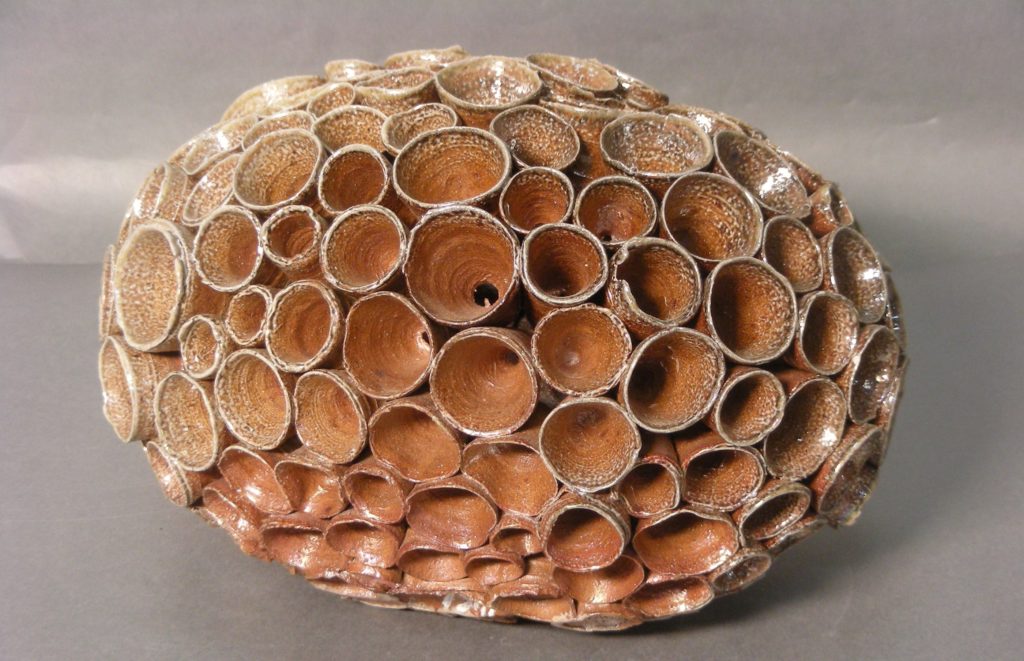
(1925-2005) born in London, England, lived and worked in Sussex, England
Cluster 1, 1973
stoneware, 9 x 24.5 inches, 93.39.150
Additional images below
In 1939, when Eileen Lewenstein was just 14, she was evacuated from her birthplace of Streatham, South London, in anticipation of the World War II bombing of London. When Lewenstein, who came from a working-class home, was temporarily lodged in a luxurious house during the evacuation, she quickly became disillusioned with capitalism. Being introduced to the principles of socialism by a fellow evacuee as well as reading Herbert Ready’s The Meaning of Art two formative experiences that set the stage for Lewenstein’s lifelong passions: politics and art. These themes frequently overlapped, and as an artist she considered her work to be part of her political practice.
After studying painting on scholarship at the West of England School of Art in Bristol and studying at the Beckenham School of Art in Beckenham, England, Lewenstein began teaching painting and drawing at London’s Central School of Arts and Crafts. Afterwards, she taught at Derby High School for Girls in Derby, England, where she began to attend pottery classes at night. In 1946 she returned to London and in 1948 set up a pottery studio in a basement on Baker Street (of Sherlock Holmes acclaim) with Brigitta Appleby, a fellow student from Central School of Arts and Crafts. They called it “Briglini Pottery,” and together they produced functional earthenware inspired by Scandinavian design, modernist architecture and Bauhaus. Then, in 1952 Eileen married Oscar Lewenstein, one of Britain’s most influential post-war theater producers, whom she met after volunteering for the socialist Unity Theatre. In 1959 she left the successful Brilini Pottery to focus on her own work, and explored ambitious hand built and sculptural forms. From 1960 to 1969 she served as a lecturer at the the Hornsey School of Art in Haringey, England.
Lewenstein was active in the promotion of ceramic arts in a variety of ways. In 1970, she co-founded with Emmanuel Cooper the Ceramic Review, a magazine dedicated to showcasing modern ceramics. Still running as one of the premiere ceramic journals, the Ceramic Review has been important in documenting, spreading, and developing ideas about the medium. She was a founding member of the Craftsmen Potters Association, and served as its chairperson from 1971-1974. Lewenstein was elected to the Council of the International Academy of Ceramics, and she used her reach to co-write with Cooper the 1974 book New Ceramics, which surveyed eastern and western European ceramics for the first time.
In the spring of 1971, under the auspices of the International Academy of Ceramics, the Tennessee Arts Commission pledged its support for the promotion and establishment of the U.S. International Ceramic Symposiums. The Symposium’s mission to help develop a worldwide network of support for ceramic art was achieved by bringing together top ceramic artists from around the world for a month-long sharing of ideas and creation of innovative ceramics.
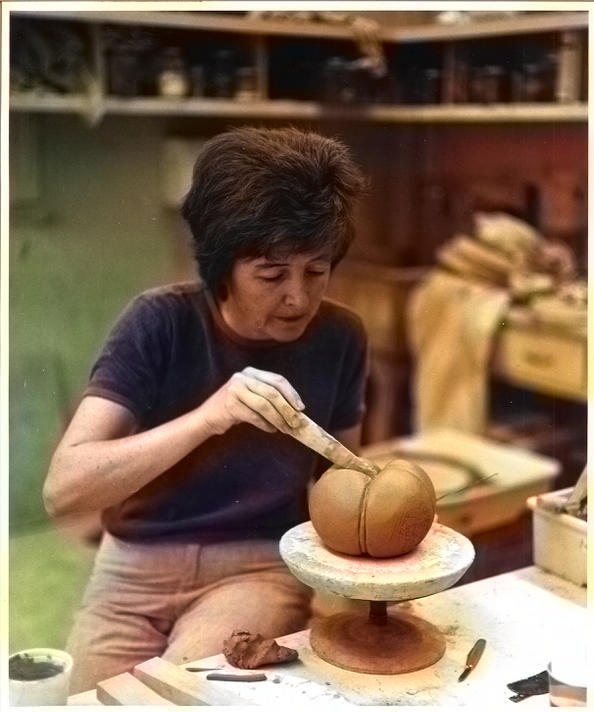
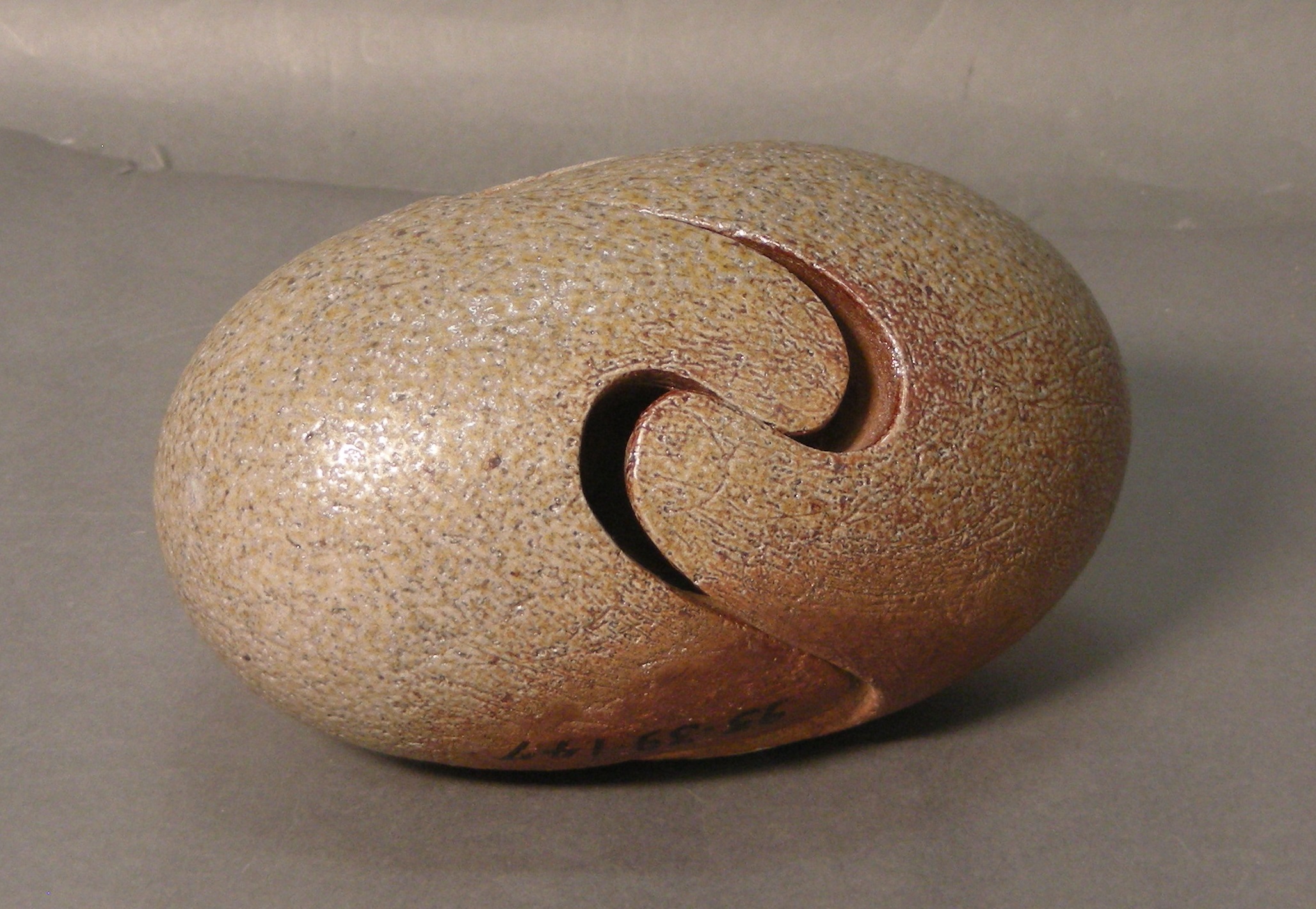
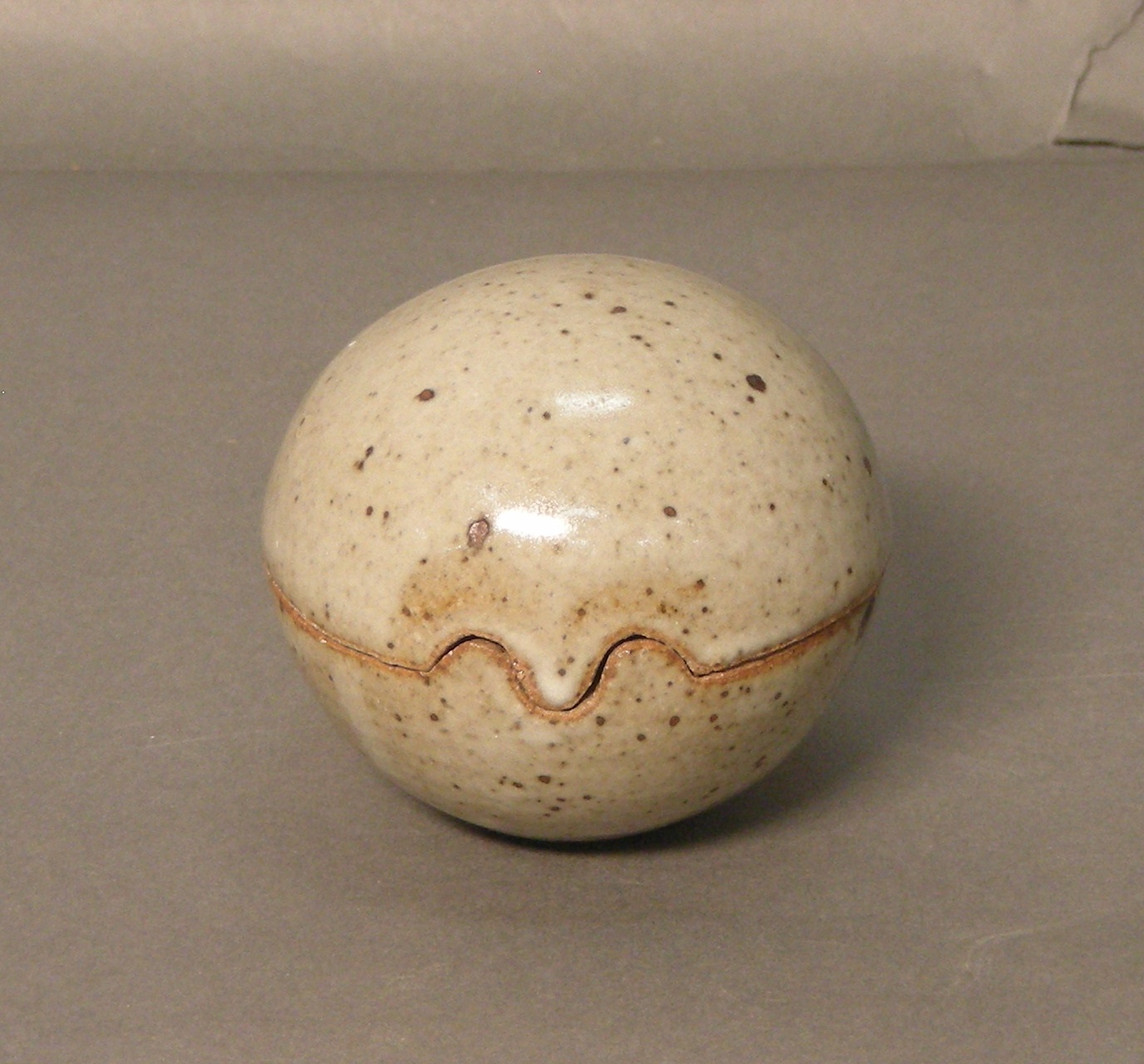
Left: Lewenstein, image is in the 1973 ICS catalogue, Center: Interior, Exterior, 1973, stoneware, 4 x 6.25 x 3 inches, 93.39.147 Right: Lidded Box, 1973, stoneware, 3 x 2.25 x 3 inches, 93.39.249 Additional images below.
Lewenstein represented England at the First U.S. International Ceramic Symposium, which consisted of twenty-five artists from thirteen different countries, and was hosted in the summer of 1973 at the Memphis Academy of Art. While at the Symposium, she made a variety of ovoid and spherical forms that merge geometry with an organic quality. She used a variety of techniques, including using wire to cut solid clay to form interlocking pieces, and using over one hundred and fifty thrown funnel-shaped pieces to create her cluster works. In addition to Memphis, she also participated in International Ceramic Symposia in Bechyne, Czechoslovakia (1970) and in Mettlach, West Germany (1974).
Lewenstein was influenced by modernist ideas politically as well as artistically. She advocated for challenging traditional ideas and embracing new ones, and she surrounded herself with the top ceramicists and intellectuals of the time. In her art she was very organized and preferred to work with porcelain since it gave her a lot of control.
Lewenstein and her husband moved in 1975 to East Sussex, England, where she set up a new studio and continued to produce work. As a member of the British Craft Council’s International Committee as well as the World Craft Council’s British Section, she was an encouraging proponent of cultural exchange. Lewenstein co-edited the Ceramic Review until 1997. In 1999 she was appointed a Member of the Most Excellent Order of the British Empire for her contributions to the arts. Lewenstein exhibited internationally, and her work is held in numerous private collections as well as in the Aberystwth University Ceramic Collection in Wales and the esteemed Victoria and Albert Museum in London, England. Lewenstein passed away in 2005 at the age of 79.
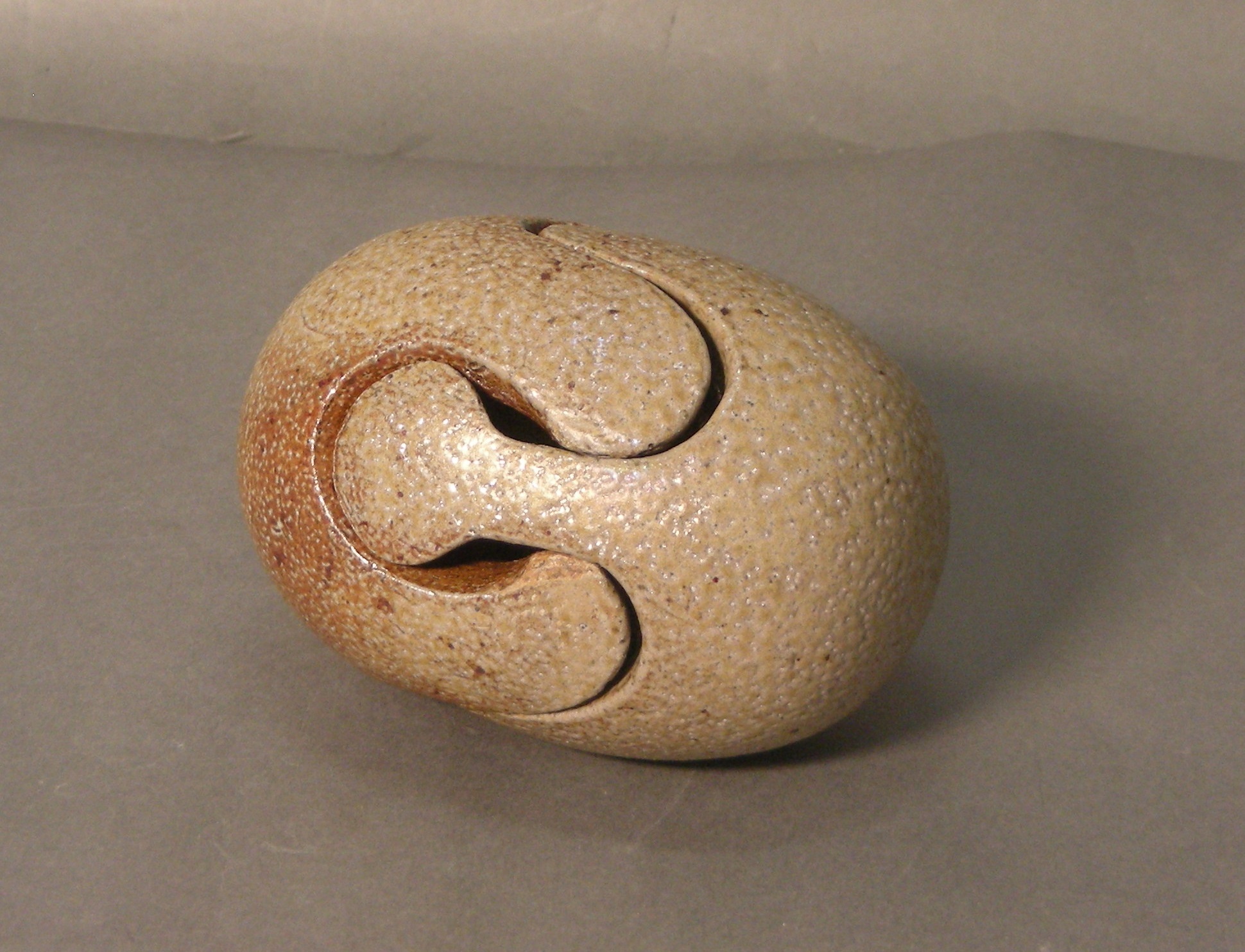
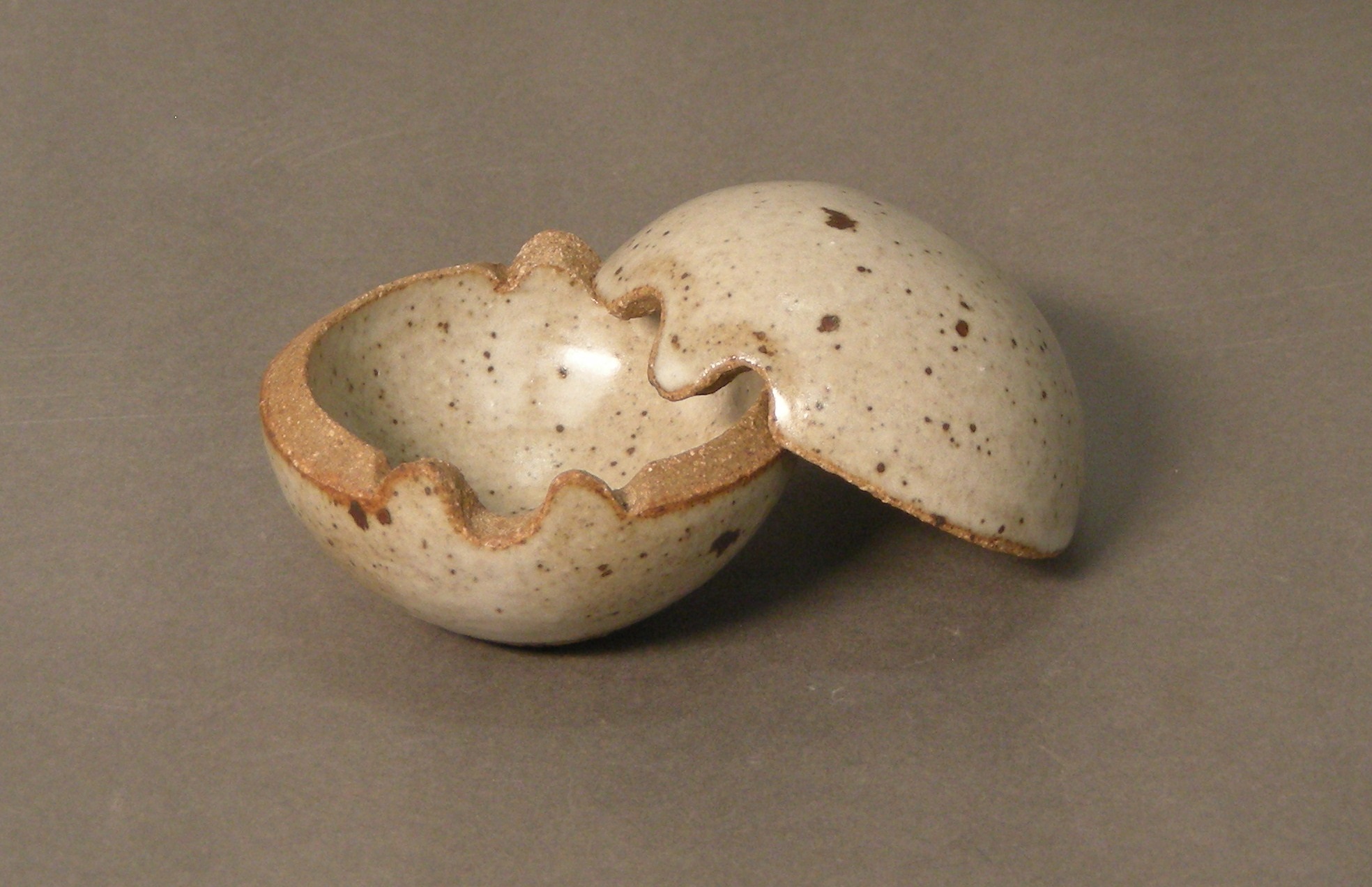
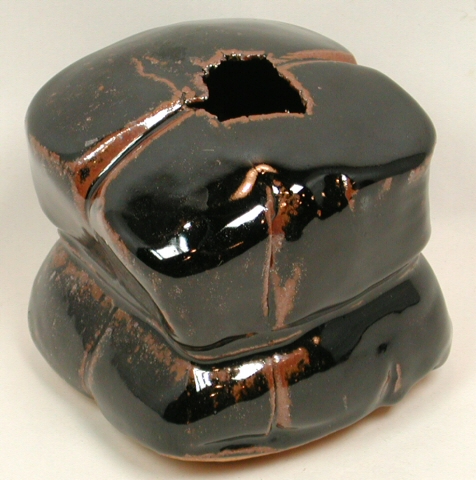
Left: Interior/Exterior, 1973, stoneware, 4.5 x 3.5 x 2.5 inches, 93.39.248 Center: Lidded Box, 1973, stoneware, 3 x 2.25 x 3 inches, 93.39.250 Right: Pot (thrown Temoku), 1973, stoneware, 5 x 4.25 x 4 inches, 93.39.251
On art pottery as opposed to functional pottery, Eileen feels that “everyone should be able to make what he wants.” She no longer works with tableware, but concentrates on pieces of an individual nature. She prefers a matt glaze and mixes her own, working mainly in stoneware. – 1973 International Ceramic Symposium catalogue
Written by Aiden Layer, TN Arts Intern

